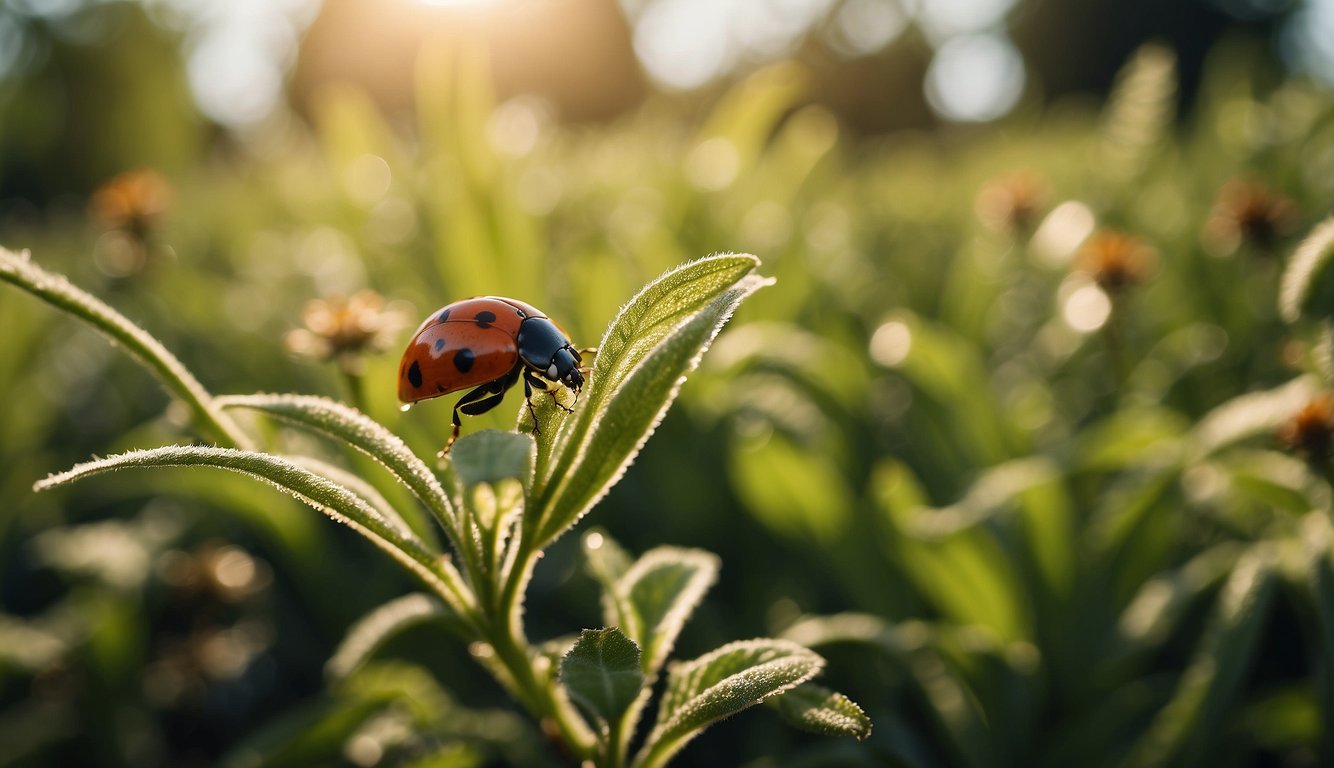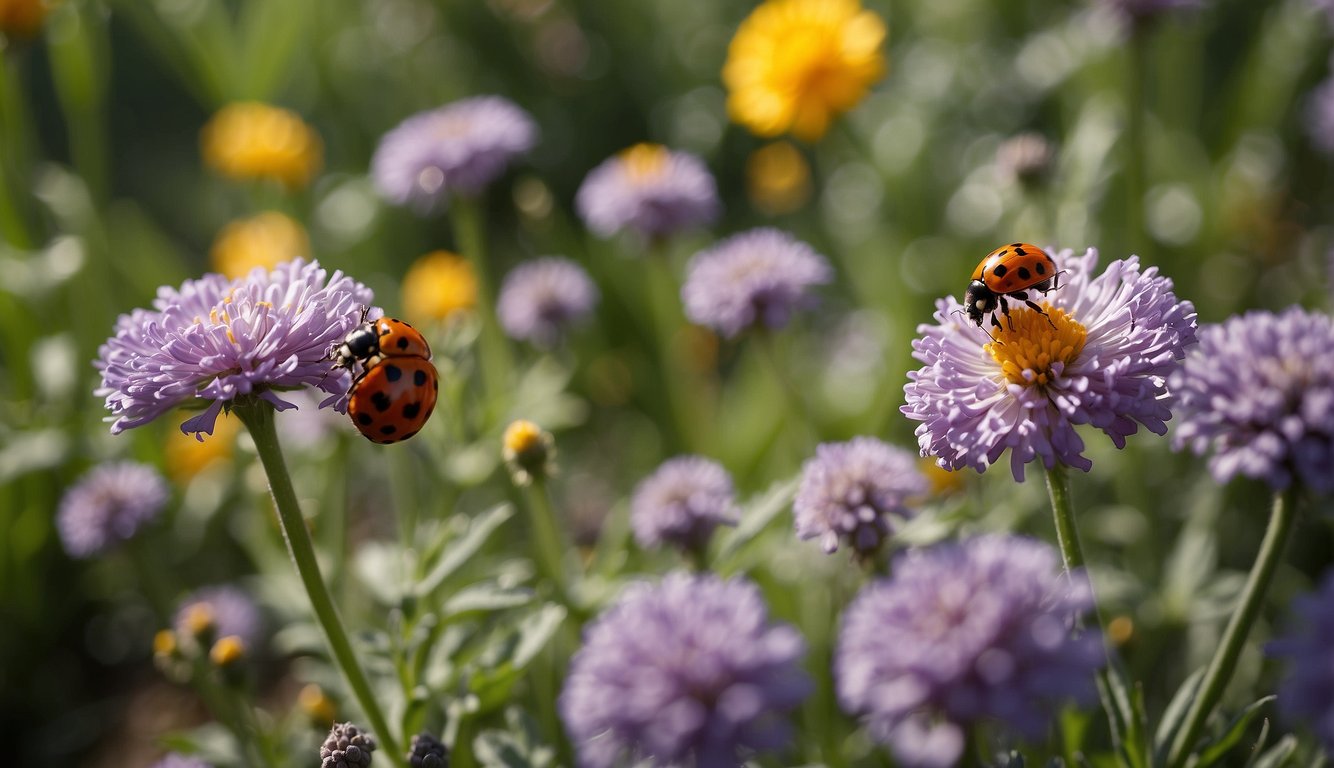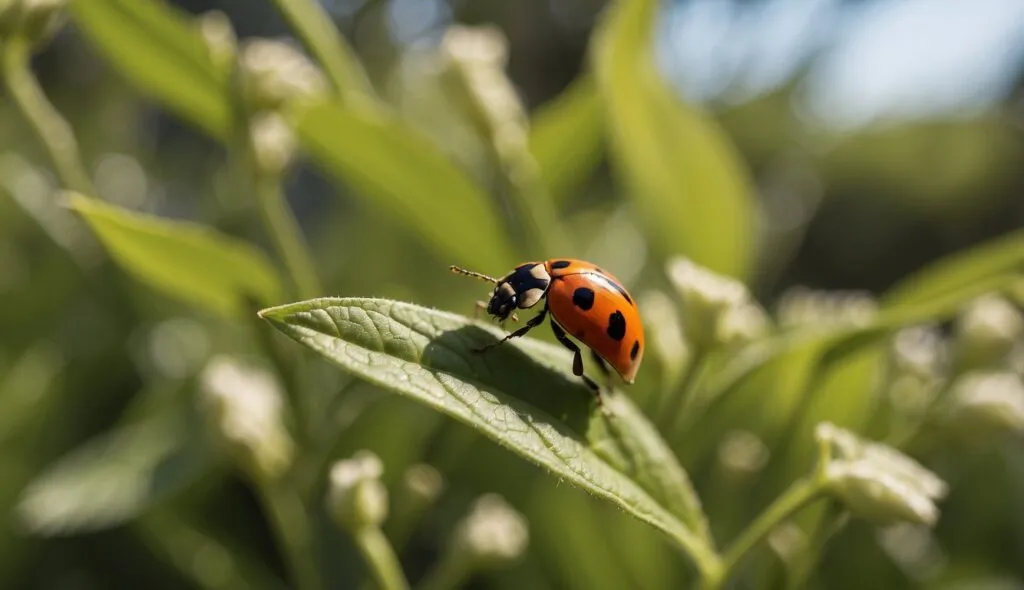Pest control is an essential aspect of maintaining a clean and healthy environment. However, traditional pest control methods often rely on the use of harmful chemicals that can have a negative impact on the environment. Fortunately, eco-friendly pest control methods have emerged as a safer and more sustainable alternative.

Understanding pest control and the negative impact of traditional methods is the first step towards adopting eco-friendly pest control methods. Eco-friendly pest control methods involve the use of natural and non-toxic products that are safe for the environment and humans. These methods focus on preventing pest infestations rather than just eliminating them, which means they are more sustainable in the long run. By implementing preventive strategies and monitoring, we can reduce the need for harsh chemicals and create a healthier environment for ourselves and our planet.
Table of Contents
Key Takeaways
- Eco-friendly pest control methods are a safer and more sustainable alternative to traditional methods.
- Understanding pest control and its negative impact on the environment is essential for adopting eco-friendly methods.
- Preventive strategies and monitoring are key to reducing the need for harsh chemicals and creating a healthier environment.
Understanding Pest Control
Pest control is the management of pest populations to minimize their impact on human activities. Pests are organisms that compete with humans for resources and can cause damage to crops, structures, and human health. In this section, we will discuss the history of pest management and the different types of pests and their impact on the environment.
History of Pest Management
Pest management has been practiced for thousands of years. Early civilizations used natural predators and beneficial insects to control pest populations. For example, the ancient Egyptians used cats to control rodent populations, while the Chinese used ducks to control snails and insects in rice paddies.
In the 20th century, pesticides were developed and became the primary method of pest control. However, the widespread use of pesticides led to environmental and human health concerns. As a result, integrated pest management (IPM) was developed in the 1970s. IPM is a holistic approach to pest management that uses a combination of methods, including cultural, mechanical, biological, and chemical control methods, to manage pest populations.
Types of Pests and Their Impact
Pests can be categorized as insects, rodents, birds, and other animals. Insects are the most common pests and can cause damage to crops, structures, and human health. Common insect pests include ants, termites, cockroaches, mosquitoes, and flies.
Rodents, such as rats and mice, can cause damage to structures and spread diseases. Birds, such as pigeons, can cause damage to buildings and pose health risks. Other animals, such as raccoons and squirrels, can also cause damage to structures and property.
Pest populations can have a significant impact on the environment. For example, the loss of biodiversity can occur when non-native species are introduced to an ecosystem. Pesticides can also harm natural predators and beneficial insects, leading to imbalances in ecosystems.
In addition to environmental impacts, pests can also pose risks to human health. For example, mosquitoes can transmit diseases such as malaria and dengue fever, while cockroaches can trigger asthma and allergies.
Overall, understanding pest control is essential for managing pest populations while minimizing their impact on the environment and human health. By using a combination of methods, including natural predators, beneficial insects, and integrated pest management, we can effectively manage pest populations while preserving ecosystems and promoting biodiversity.
Eco-Friendly Pest Control Methods
As advocates of sustainability and protection of the environment, we understand the importance of utilizing eco-friendly pest control methods. These methods are non-toxic and natural, making them an ideal solution for those who want to maintain a healthy ecosystem while keeping pests at bay.
Biological Control Techniques
One of the most effective ways to control pests is through biological control techniques. This involves the use of natural predators, parasites, and pathogens to manage pest populations. For example, ladybugs can be introduced into gardens to control aphids, while nematodes can be used to control soil-borne pests.
Physical and Mechanical Barriers
Physical and mechanical barriers are another effective method of pest control. This involves creating barriers that prevent pests from entering or accessing an area. For example, sticky traps can be used to catch flying insects, while diatomaceous earth can be used to create a barrier that kills crawling insects.
Natural Repellents and Ingredients
Natural repellents and ingredients can also be used to keep pests at bay. Essential oils such as lavender, peppermint, and eucalyptus are known to repel insects, while neem oil is a natural insecticide that can be used to control a wide range of pests. In addition, preventive measures such as proper waste management and sealing entry points can help to prevent pest infestations.
By using eco-friendly pest control methods, we can effectively manage pest populations while preserving biodiversity and protecting the environment. Green pest control is not only effective but also sustainable, making it an ideal choice for those who want to maintain a healthy and thriving ecosystem.
Traditional vs. Green Pest Control
When it comes to pest control, there are two main approaches: traditional and green. Traditional pest control methods involve the use of chemical pesticides, which can have harmful effects on the environment and human health. Green pest control, on the other hand, focuses on sustainable solutions that are both cost-effective and safe for humans and the environment.
Chemical Pesticides and Their Effects
Chemical pesticides, also known as synthetic pesticides, have been used for decades to control pests. However, these pesticides have been linked to a range of health problems, including skin irritations, respiratory problems, and even cancer. In addition, these pesticides can harm non-targeted organisms and disrupt the balance of the ecosystem.
Boric acid and pyrethrin are two commonly used chemical pesticides. While they are effective at killing pests, they can also have harmful effects on human health. Boric acid can cause skin and eye irritation, while pyrethrin can cause respiratory problems.
Advantages of Eco-Friendly Practices
Green pest control methods, such as organic pesticides and herbicides, are a safer and more sustainable alternative to chemical pesticides. These methods use natural ingredients that are less harmful to the environment and human health.
One of the main advantages of eco-friendly pest control is its focus on health and safety. By using natural ingredients, these methods reduce the risk of skin irritations, respiratory problems, and other health issues associated with chemical pesticides.
Another advantage of green pest control is its long-term effectiveness. While chemical pesticides may provide short-term relief, they can also create resistance in pests, making them harder to control in the future. Eco-friendly methods, on the other hand, focus on preventing infestations by addressing the root causes of pest problems.
In conclusion, green pest control is a safer and more sustainable alternative to traditional pest control methods. By using natural ingredients and sustainable solutions, we can control pests without harming the environment or our health.
Preventive Strategies and Monitoring

As a part of our eco-friendly pest control approach, we prioritize preventive strategies and regular monitoring. By implementing these measures, we can reduce the need for reactive measures and minimize the impact of pests on our environment.
Habitat Modification and Exclusion
One of the most effective preventive strategies is habitat modification and exclusion. By modifying the habitat to make it less attractive to pests, we can reduce the likelihood of infestations. This can include practices such as removing standing water, sealing entry points, and keeping a clean and clutter-free environment.
Regular Inspection and Maintenance
Regular inspection and maintenance are also crucial in preventing pest infestations. By monitoring the property on a regular basis, we can detect any signs of pest activity early on and take action before the problem escalates. This includes checking for signs of rodent populations, inspecting compost and garbage areas, and keeping an eye out for any damage to plants or structures.
In addition to these measures, we also use natural repellents and sustainable practices to deter pests. This can include using garlic spray, vinegar, or lavender oil to repel insects, as well as implementing companion planting and healthy soil practices to promote a healthy ecosystem.
While these methods can be effective in preventing pest infestations, it is important to note that sometimes professional pest control may be necessary. In these cases, we prioritize using eco-friendly and humane methods to protect both the environment and the pests themselves.
Overall, by prioritizing preventive strategies and regular monitoring, we can create a healthier and more sustainable environment while also protecting our homes and properties from pests.
Conclusion

In conclusion, we have learned that eco-friendly pest control methods are not only effective but also sustainable. By adopting these methods, we can protect our environment and ensure a healthy ecosystem for future generations.
One effective method is the use of marigolds, which can repel pests naturally. Another method is the use of physical control, such as sealing cracks and crevices, to prevent pests from entering our homes. We can also use physical methods like traps and baits, which are targeted and do not involve the use of toxic chemicals.
Peppermint oil is another natural solution that can repel pests and is safe for humans and pets. We can also use composting to reduce waste and create a healthy environment that is resistant to pests.
It is important to note that resistance to pesticides is a growing concern, and the use of pathogens can be an effective solution. However, it is crucial to use them responsibly and in a targeted manner.
Overall, eco-friendly pest control methods are effective, sustainable, and safe for humans and the environment. By adopting these methods, we can protect our homes and ensure a healthy ecosystem for future generations.
Frequently Asked Questions
What are the most effective natural pest control techniques for home use?
There are several effective natural pest control techniques that can be used at home. One of the most popular is the use of essential oils, such as peppermint, lavender, and eucalyptus, which can be used to repel insects. Other techniques include the use of diatomaceous earth, which is a natural powder made from fossilized diatoms, and the use of sticky traps, which can be used to catch and control pests.
How do biological methods contribute to eco-friendly pest control?
Biological methods involve the use of natural predators to control pest populations. For example, ladybugs can be used to control aphids, and praying mantises can be used to control caterpillars. Biological methods are eco-friendly because they do not involve the use of harmful chemicals, and they are often more sustainable than traditional pest control methods.
What are the advantages of using eco-friendly pest control products?
There are several advantages to using eco-friendly pest control products. First, they are safer for humans and pets because they do not contain harmful chemicals. Second, they are more sustainable because they do not harm the environment. Finally, they are often more effective than traditional pest control methods because they target specific pests without harming beneficial insects.
Can eco-friendly pest control be as effective as traditional methods?
Yes, eco-friendly pest control can be just as effective as traditional pest control methods. In fact, many eco-friendly methods are more effective because they target specific pests without harming beneficial insects. Additionally, eco-friendly methods are often more sustainable and safer for humans and pets.
What strategies are recommended for natural pest control in agriculture?
There are several strategies that are recommended for natural pest control in agriculture. These include the use of crop rotation, which can help to prevent pest infestations, and the use of natural predators, such as ladybugs and lacewings, which can help to control pest populations. Additionally, the use of natural pesticides, such as neem oil and pyrethrin, can be effective in controlling pests.
How can consumers evaluate the effectiveness of eco-friendly pest control services?
Consumers can evaluate the effectiveness of eco-friendly pest control services by looking for reviews and testimonials from other customers. Additionally, they can ask the pest control company for information about the products and techniques that they use, and they can ask for references from other customers. Finally, consumers can look for certifications and accreditations, such as the Green Shield Certification, which indicates that a company uses eco-friendly pest control methods.


